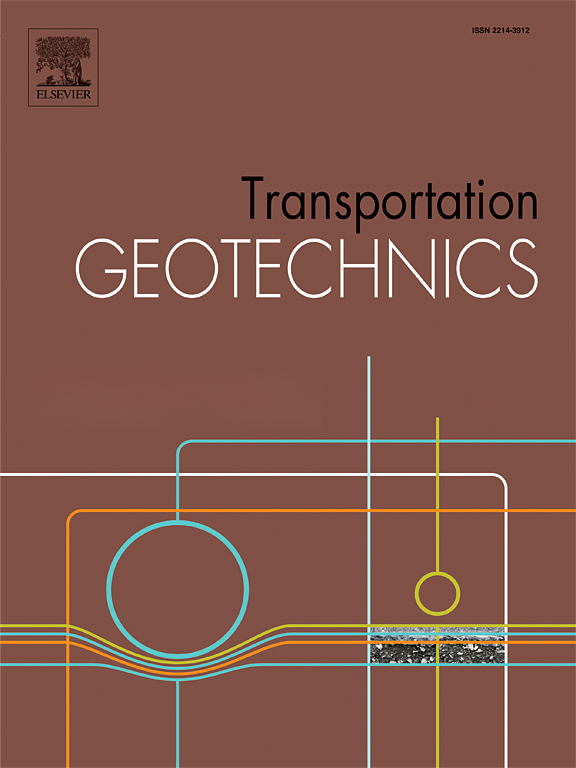利用最小势能法评估考虑水位波动的非饱和堤防/边坡三维稳定性
IF 5.5
2区 工程技术
Q1 ENGINEERING, CIVIL
引用次数: 0
摘要
水位波动对非饱和堤防的稳定起着至关重要的作用,因为水位波动会显著影响基质吸力。本文介绍了一种新的基于最小势能法的分析方法来解释路堤稳定性的波动。将临界滑移面(CSS)建模为一个由6个参数控制的椭球,通过最小化滑动质量势能来确定临界滑移面,并使用麻雀搜索算法(SSA)进行优化。通过三个案例研究,探讨了水位、进风值比、孔径分布比和抗剪强度参数对堤防稳定性和CSS位置的影响,验证了该方法的有效性和准确性。结果表明,该方法得到的安全系数与参考解基本一致,并强调了进风值、孔隙大小分布和地基抗剪强度参数对路堤稳定性的影响受水位变化的调节。路基破坏程度随有效内摩擦角的增大而变宽,随孔径分布比的减小而减小。本文章由计算机程序翻译,如有差异,请以英文原文为准。
Assessing 3D stability of unsaturated embankments/slopes considering water level fluctuations using the minimum potential energy method
Water level fluctuations play a crucial role in the stability of unsaturated embankments as they can significantly affect matric suction. This study introduces a novel analytical method based on the minimum potential energy approach to account for these fluctuations in the embankment stability. The critical slip surface (CSS) is modeled as an ellipsoid governed by six parameters, with its determination achieved by minimizing potential energy of the sliding mass, optimized using the sparrow search algorithm (SSA). The method’s validity and accuracy are demonstrated through three case studies that explore the effects of various parameters, including water level, air-entry value ratio, pore size distribution ratio, and shear strength parameters, on stability and CSS location of embankments. The findings reveal that the safety factor (SF) obtained by the proposed method closely align with reference solutions, and highlight that the influence of air-entry value, pore size distribution, and shear strength parameters of foundation on embankment stability is modulated by water level changes. Notably, the failure extent of the embankment broadens with an increasing effective internal friction angle and diminishes with a decrease in pore size distribution ratio.
求助全文
通过发布文献求助,成功后即可免费获取论文全文。
去求助
来源期刊

Transportation Geotechnics
Social Sciences-Transportation
CiteScore
8.10
自引率
11.30%
发文量
194
审稿时长
51 days
期刊介绍:
Transportation Geotechnics is a journal dedicated to publishing high-quality, theoretical, and applied papers that cover all facets of geotechnics for transportation infrastructure such as roads, highways, railways, underground railways, airfields, and waterways. The journal places a special emphasis on case studies that present original work relevant to the sustainable construction of transportation infrastructure. The scope of topics it addresses includes the geotechnical properties of geomaterials for sustainable and rational design and construction, the behavior of compacted and stabilized geomaterials, the use of geosynthetics and reinforcement in constructed layers and interlayers, ground improvement and slope stability for transportation infrastructures, compaction technology and management, maintenance technology, the impact of climate, embankments for highways and high-speed trains, transition zones, dredging, underwater geotechnics for infrastructure purposes, and the modeling of multi-layered structures and supporting ground under dynamic and repeated loads.
 求助内容:
求助内容: 应助结果提醒方式:
应助结果提醒方式:


